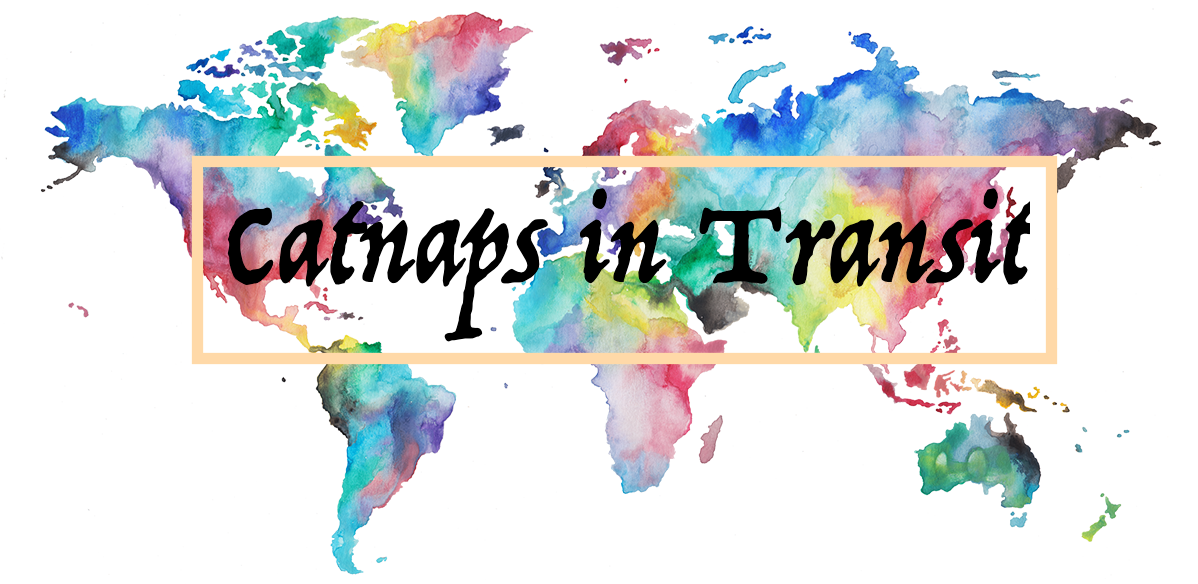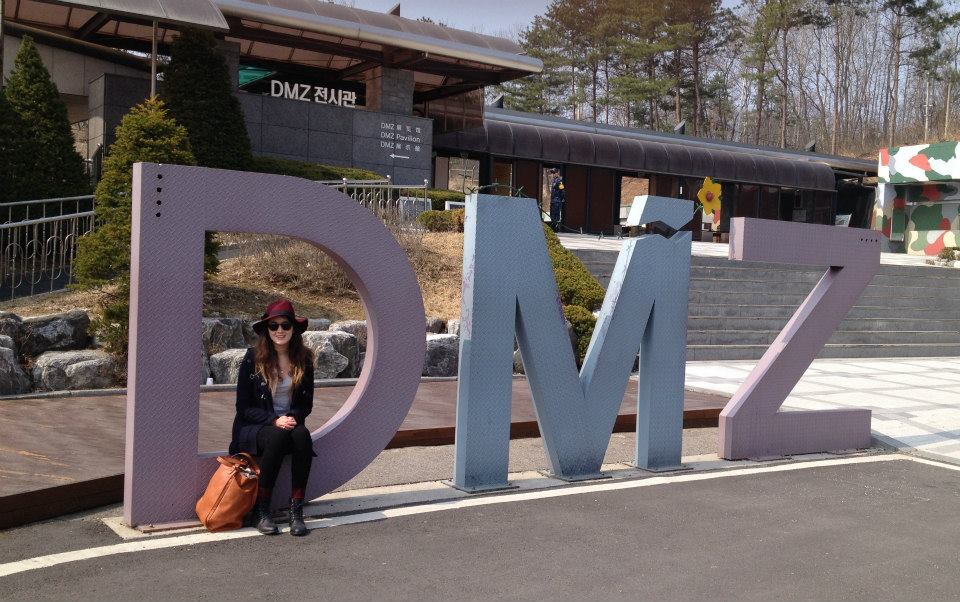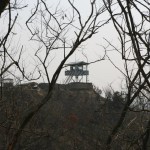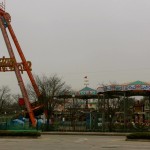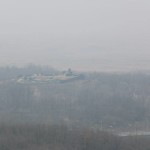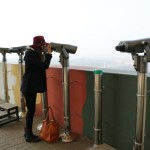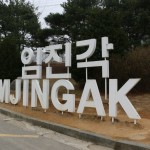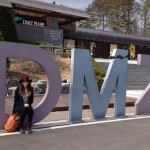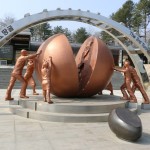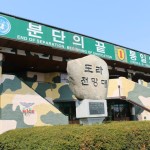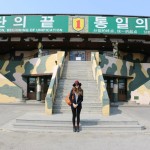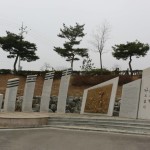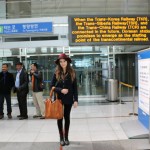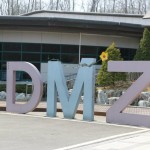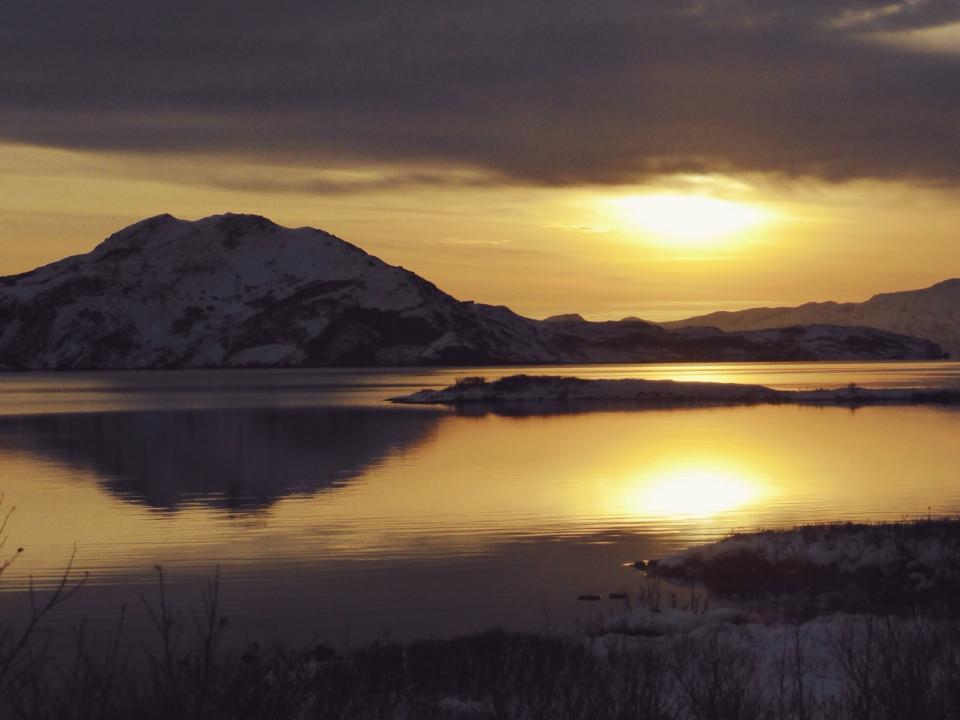South Korea
Getting a Glimpse of North Korea: Visiting the DMZ
I think most people would agree that North Korea is the scariest country in the world. Not only do we hear stories of pure horror from those who have escaped the country, but the sheer mystery of what goes on within the place is terrifying.
But with great mystery comes great curiosity, and during my time in South Korea I was desperate to get a glimpse of the South’s crazy neighbour.
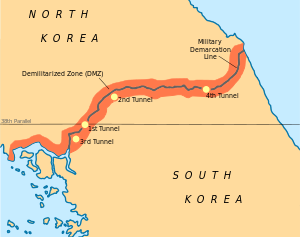 The Korean Demilitarized Zone, or DMZ, stretches some 248 kilometers across the Korean Peninsula from the mouth of the Imjin River in the west to the town of Goseong in the east. It has existed since July 27th 1953, when an uneasy armistice was brokered between the socialist DPRK (Democratic People’s Republic of Korea) in the north, and the UN-backed ROK (Republic of Korea) in the south. Today the Korean War remains unresolved, and the DMZ survives as the most heavily militarized border in the world.
The Korean Demilitarized Zone, or DMZ, stretches some 248 kilometers across the Korean Peninsula from the mouth of the Imjin River in the west to the town of Goseong in the east. It has existed since July 27th 1953, when an uneasy armistice was brokered between the socialist DPRK (Democratic People’s Republic of Korea) in the north, and the UN-backed ROK (Republic of Korea) in the south. Today the Korean War remains unresolved, and the DMZ survives as the most heavily militarized border in the world.
The DMZ is known as the most dangerous place on Earth, which is easy to believe when the surrounding mountains on both sides of the 4km strip of land separating the two Koreas are crowded with troops, guard posts, tanks, missile, bunkers, gun emplacements, land mines and other weapons of death and destruction. It would only take one wrong move (or one reckless tourist) to disrupt the precarious peace along the border.
Ironically, the 248km DMZ strip has become one of Asia’s greatest nature preserves, after all, human activity has been extremely limited in the no-mans land over the last half-century.
I had great plans to step foot through the DMZ and onto pure North Korean territory, but unfortunately my travel agent in Seoul made a huge mistake and forgot to put my name on the list of people going into the Joint Security Area (North Korean soil), so I only got to experience the DMZ.
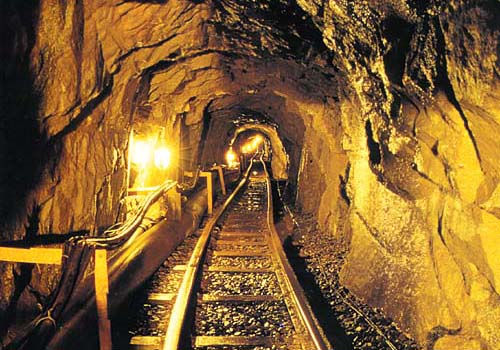 The DMZ tour was extremely fascinating by itself though, and I didn’t have to sign my life away to get there.
The DMZ tour was extremely fascinating by itself though, and I didn’t have to sign my life away to get there.
The tour felt completely safe but throughout the day our guide reminded up that we were in a false state of security as she recounted some of the horrors that had occurred in the DMZ. The most horrifying story was the axe murder incident, where two U.S. Army officers were murdered by North Korean soldiers. What for? They had been part of a work party cutting down a poplar tree in the JSA, that was alleged to have been blocking the view of United Nations (UN) observers.
Only North Koreans could react so badly when a neighbor does some outdoor renovation…
As we listened intently to the history and horrors we stopped at a few important places:
The Third Tunnel:
Also known as “third tunnel of aggression” , this underground tunnel was discovered in 1978. This was the third underground tunnel to be found into South Korea created by North Korea, and it is expected there could be up to twenty more similar tunnels that have all presumably been created for the purpose of attack. The third tunnel is the most famous as it was only 44km from Seoul when it was discovered and could have accommodated 30,000 men per hour with light weaponry, making it a significant threat to South Korea and the 1953 Armistice Agreement.
 The third tunnel is now a tourist attraction and there is a museum that features an excellent movie explaining the conflict and the tunnel. As well as many other artifacts and displays of conflicts between the two countries. North Korea originally denied building the tunnel and suggested that South Korea was behind its construction. However, the dynamite drill marks and incline of the tunnel (so water flows towards the entrance rather than end being dug) provided rather conclusive evidence that North Korea was behind the construction. That’s when North Korea claimed that the tunnel was actually a coal mine. Hysterically, the granite walls of the tunnel were painted with black “coal” to try and support this statement, even though geologically it is impossible.
The third tunnel is now a tourist attraction and there is a museum that features an excellent movie explaining the conflict and the tunnel. As well as many other artifacts and displays of conflicts between the two countries. North Korea originally denied building the tunnel and suggested that South Korea was behind its construction. However, the dynamite drill marks and incline of the tunnel (so water flows towards the entrance rather than end being dug) provided rather conclusive evidence that North Korea was behind the construction. That’s when North Korea claimed that the tunnel was actually a coal mine. Hysterically, the granite walls of the tunnel were painted with black “coal” to try and support this statement, even though geologically it is impossible.
On the tour you have the opportunity to climb through the tunnel yourself, although I would not recommend it for the claustrophobic.
Dora Observatory:
The Dora Observatory is on top of Mount Dora (Dorasan) and looks across the DMZ, fro here you can feast your hungry little eyes on the mysterious country itself.
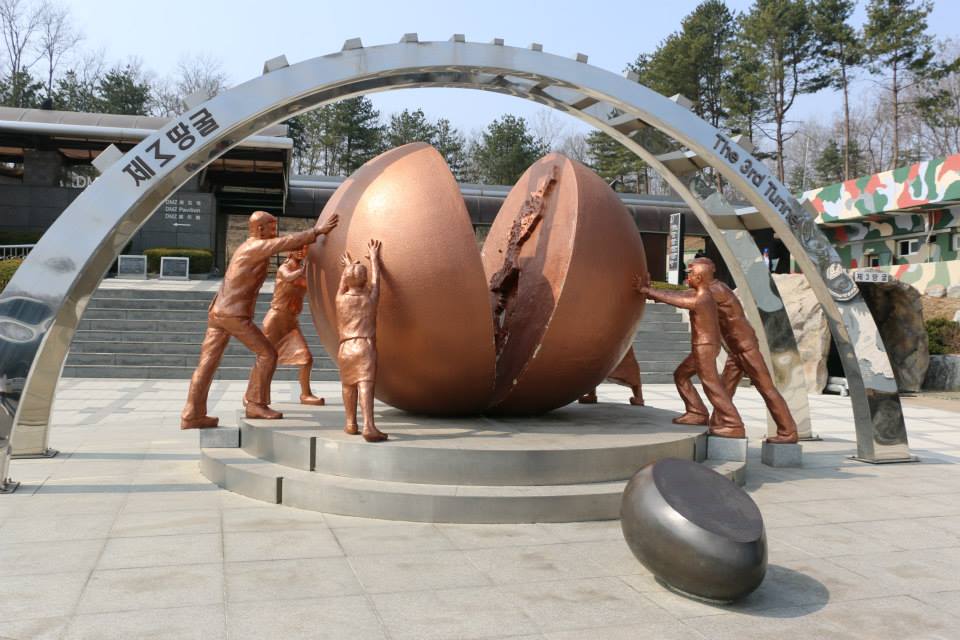 There are a few main sights to spot from the observatory. You can see Kijong-dong, which is also known as “propaganda village”, a town of multi-story apartments with electric lighting that were built to appear luxurious to rural Koreans in the 1950s when they were constructed. But modern telescopes can easy reveal that the buildings are just empty concrete shells that lack window glass and interior rooms. Kijong-dong received it’s nickname because up until 2004, massive speakers directed propaganda broadcasts towards South Korea.
There are a few main sights to spot from the observatory. You can see Kijong-dong, which is also known as “propaganda village”, a town of multi-story apartments with electric lighting that were built to appear luxurious to rural Koreans in the 1950s when they were constructed. But modern telescopes can easy reveal that the buildings are just empty concrete shells that lack window glass and interior rooms. Kijong-dong received it’s nickname because up until 2004, massive speakers directed propaganda broadcasts towards South Korea.
You can also spot the South Korean and North Korean flag towers. In the 1980s, South Korea built a 98.4 meter tower with a 130kg South Korean flag in its village of Daeseong-dong. The North Korean government responded by building a 160 meter tower with a 270 kg North Korean flag in Daeseong-dong. The flag is ridiculous handstands as a monument to the North Korea’s absurdity.
Dorasan Station
In an attempt to create unity between North and South Korea the Gyeongui railway link was built to connect Seoul, in South Korea, with Kaesong, in North Korea with the hopes for the rail to one day support trains heading further North. The stations motto is: “Not the last station from the South, but the first station towards the North”. Unfortunately North Korea has not agreed to link up the two countries by rail so the station is in pristine new condition. If the rail lines do eventually link up, you would be able to travel from South Korea, right through North Korea, China and Russia, and then into Europe, which is really pretty amazing.
Having the opportunity to glimpse into one of the scariest and most dangerous places in the world is an experience that I would highly recommend to anyone travelling to South Korea. Being able to learn so much about such an awful ongoing conflict up close and in person is the only way to fully understand the trauma that the separation has caused. But the best element of the experience is hearing the firsthand optimism from South Koreans that one day the two countries will be reunited and both sides will find peace.
